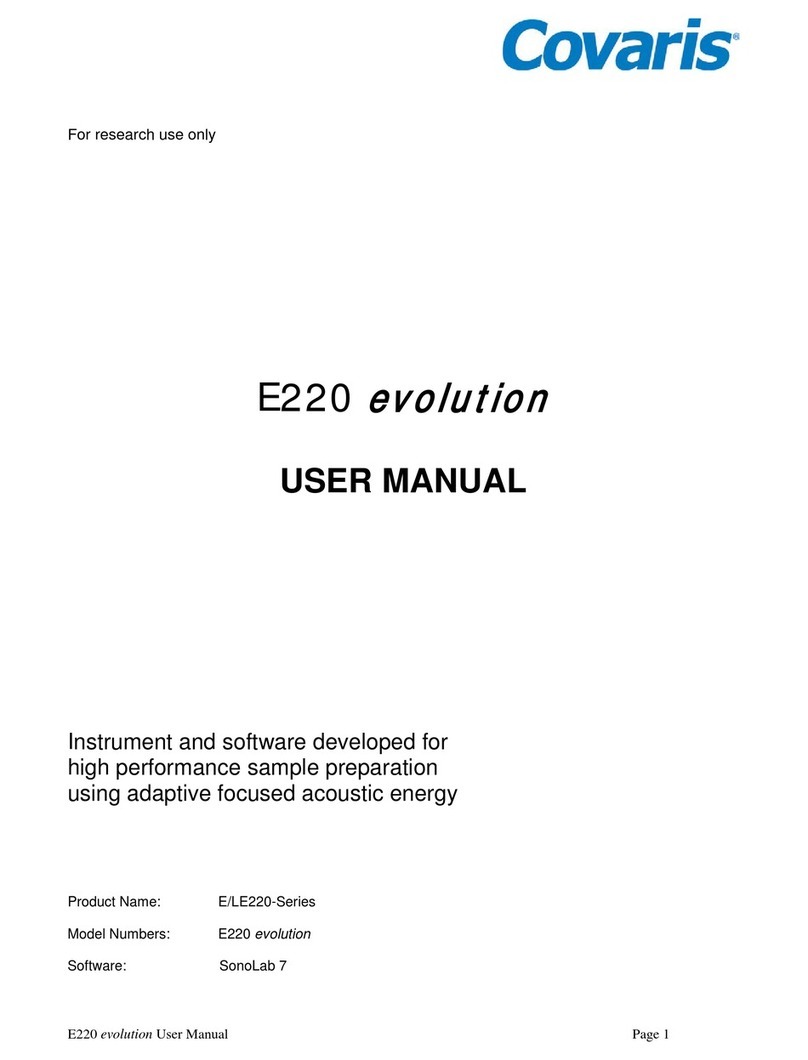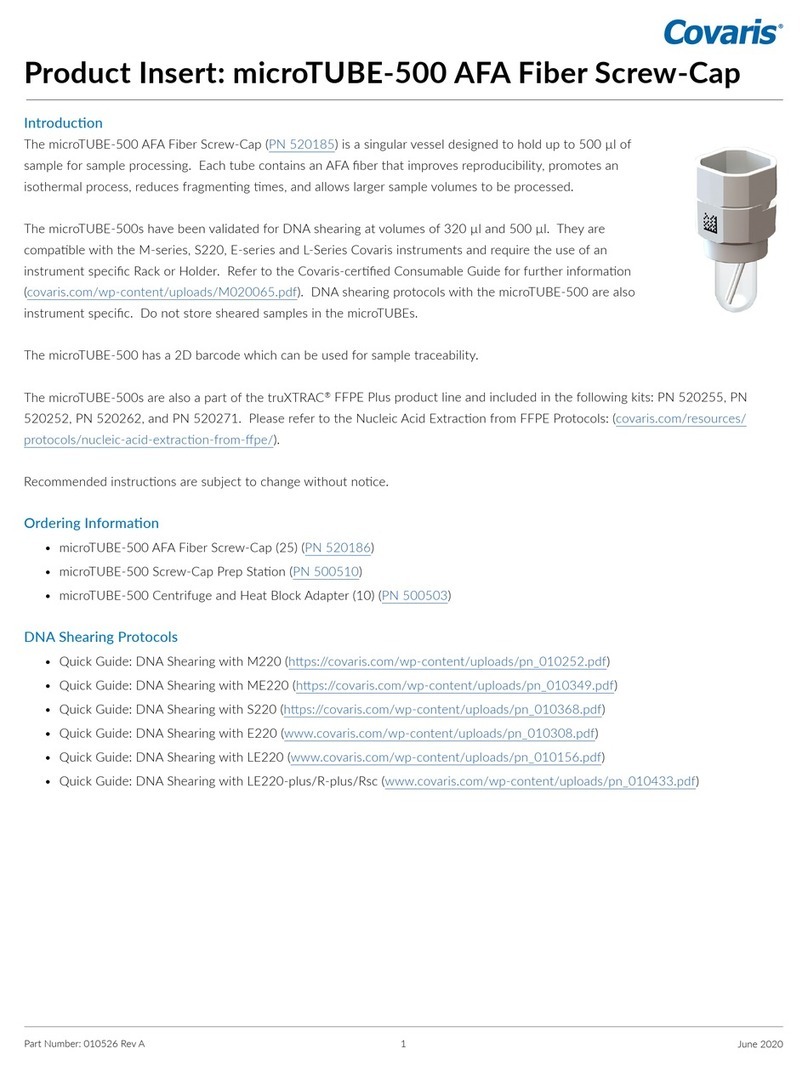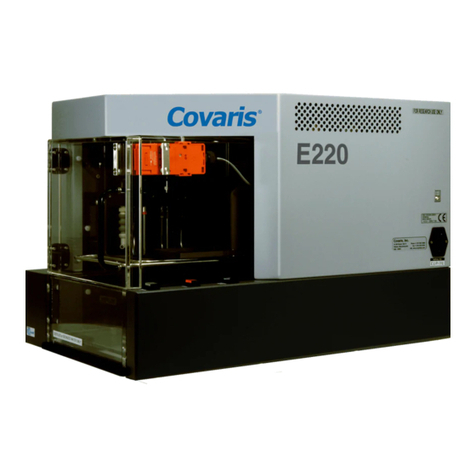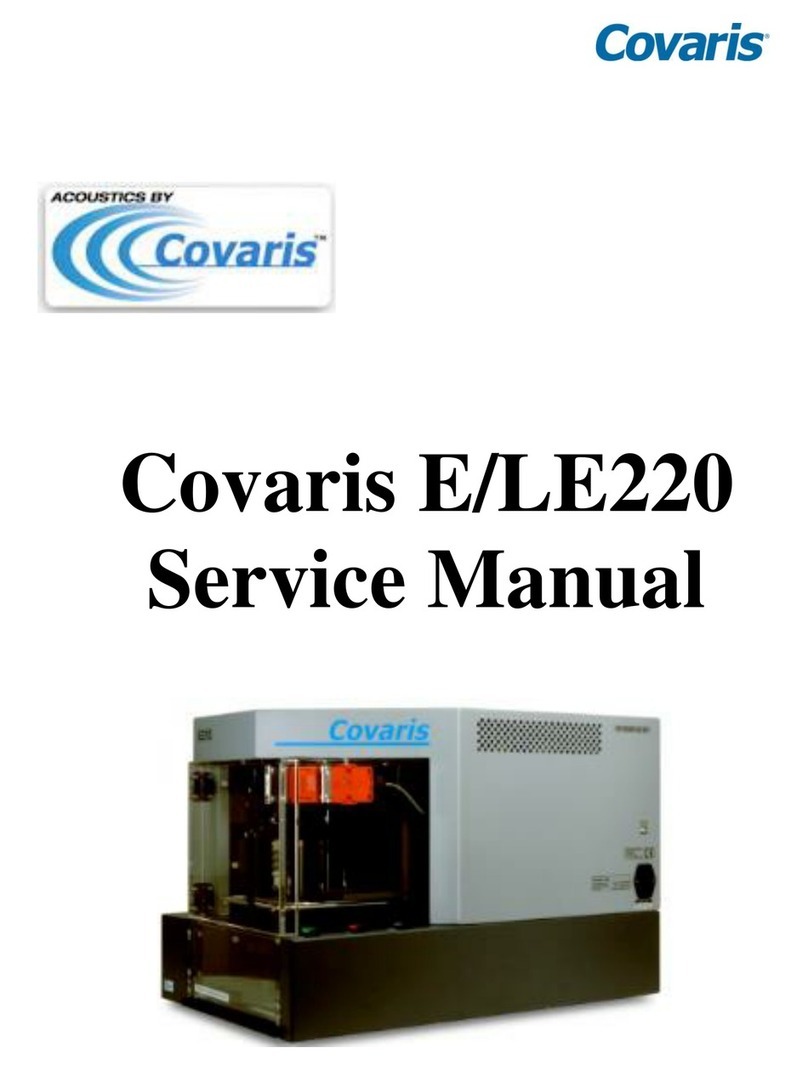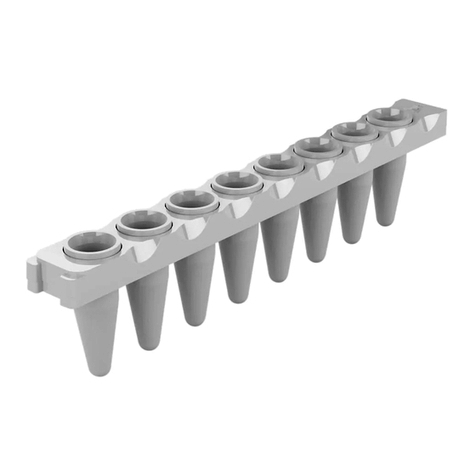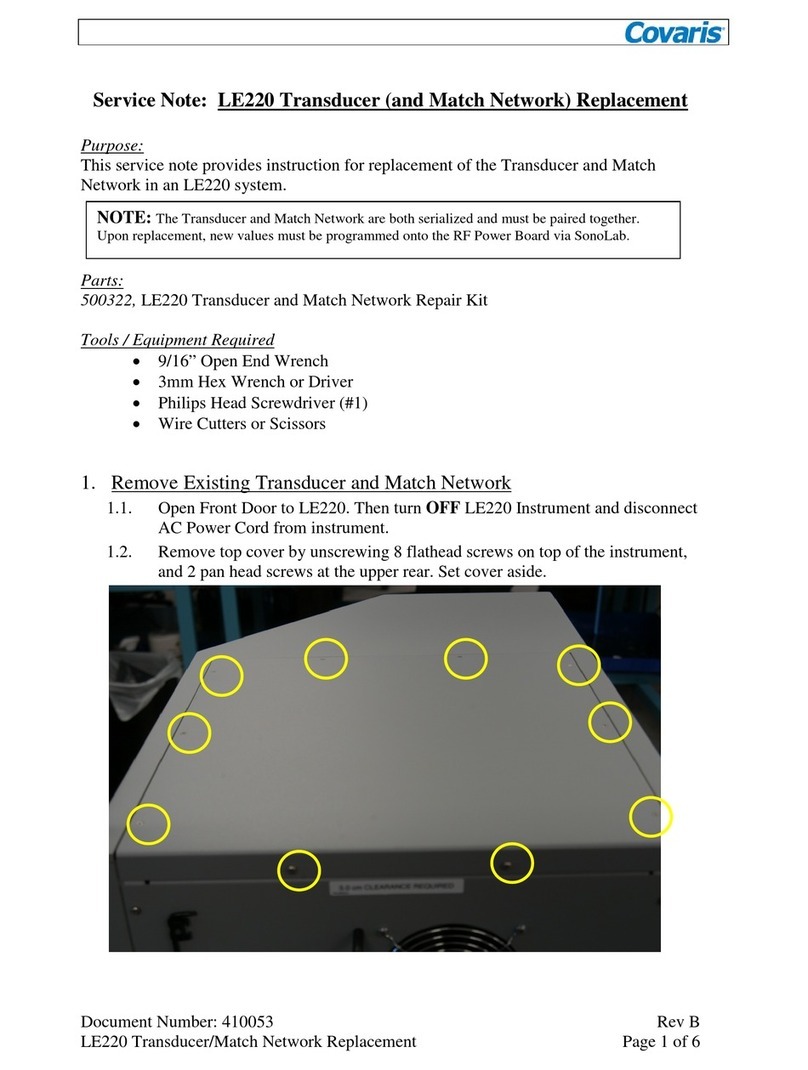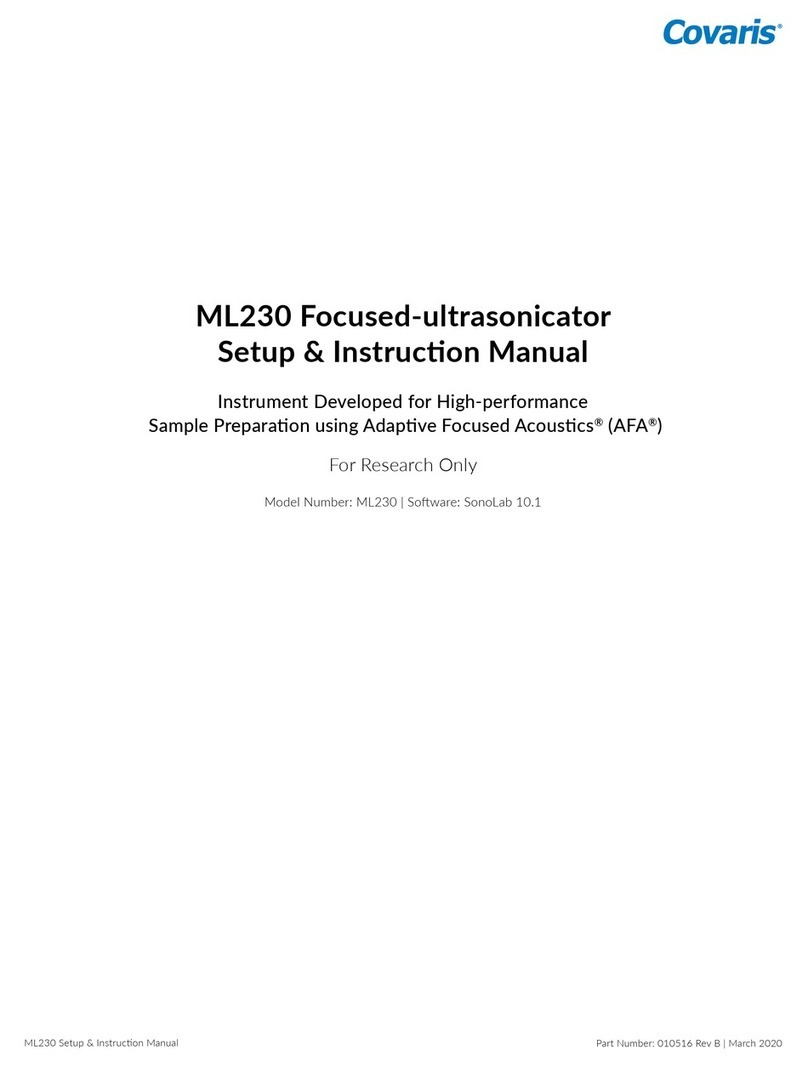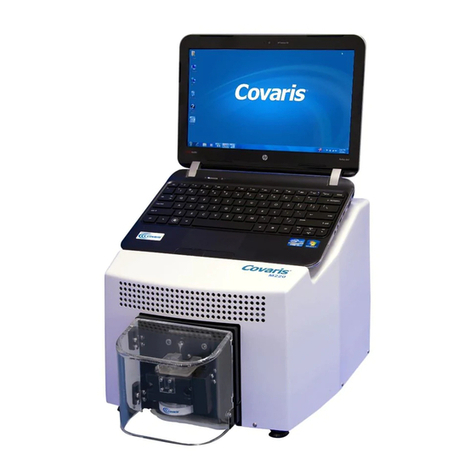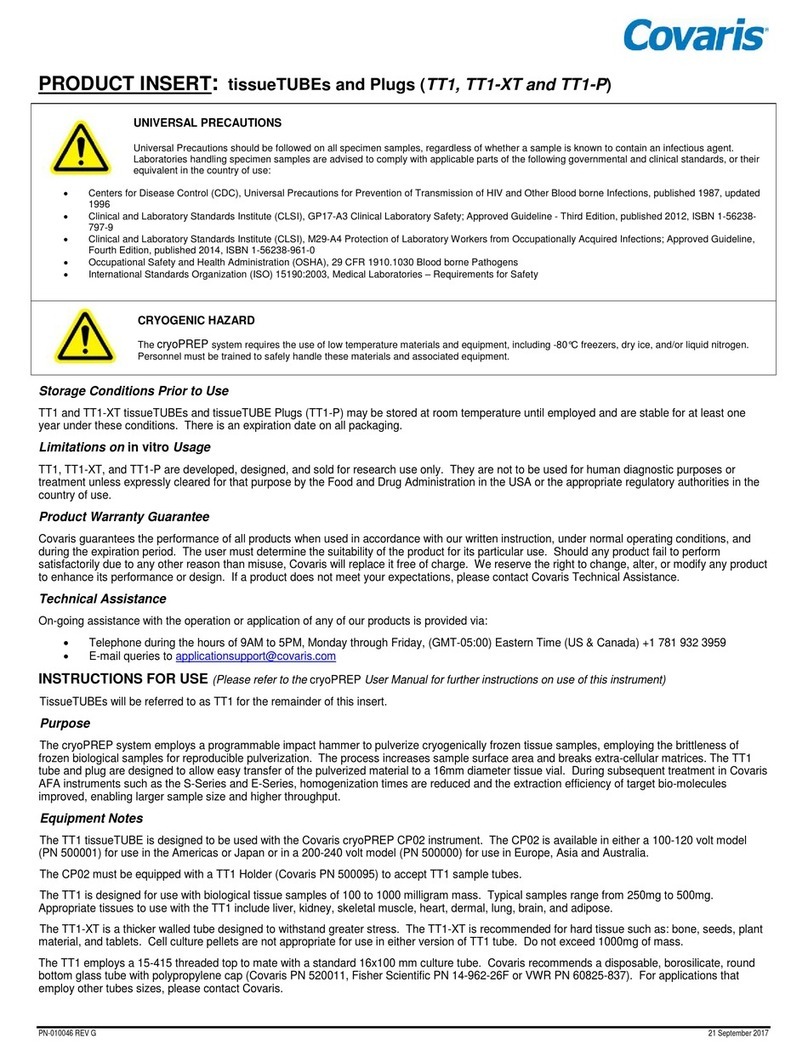S-Series Service Manual Page 7 410087 Rev. B
3 Introduction
The Covaris Adaptive Focused Acoustics process works by sending converging
acoustic energy wave packets from a dish-shaped transducer to a small, localized
area. Mechanical energy is thus applied to the sample, without directly contacting the
sample. At low energy intensities, gentle mixing is affected. At high energy
intensities, intense shock waves result in DNA shearing. The S-series accomplishes
this via the following subsystems, under the control of the Covaris SonoLab software.
3.1 Transducer
The transducer converts an electrical signal into an acoustic signal. Specifically,
a burst of electrical sine-waves is converted into a series of acoustic pressure
waves. The transducer is focused such that the pressure waves converge at a
focal point inside the treatment vessel. The primary mechanism to process a
sample or compound is the growth and collapse of cavitation bubbles within the
acoustic focal zone, inside the sample vessel. The collapse of the bubbles
results in an intense, localized jet of solute acting upon the sample.
3.2 Interlock Subsystem
Safety interlocks prevent energizing of the transducer when doing so might
result in damage to the transducer or injury to operators.
3.3 Degassing System
In order for the acoustic process to function properly, the level of dissolved gas
in the water bath must be reduced. A positive-displacement degassing pump
pulls vacuum on an inlet tube submerged in the water bath. This inlet tube has 6
small holes through which the bath water enters. The sudden pressure drop
inside the tube causes dissolved gasses to come out of solution and form
bubbles. The water and the bubbles flow through the pump to the outlet tube
before the gas can re-dissolve in the water. The bubbles float to the surface and
vent to atmosphere. Simple!
3.4 Control Electronics System
The control electronics are mounted at the rear of the instrument enclosure, and
connect to components located in the treatment area via bulkhead connectors.
Both the S and S220 instruments have a 24 volt DC power supply for low
voltage and digital components of the system circuit boards. In the S1 and S2
instruments, the S Tuning board interfaces between the computer, the various
sensors, interlocks, and the RF generator circuit board. The S220 family
contains an RF Controller board that provides similar functions. The S220 board
analogous to the S RF Controller board is called the S220 RF Module. The
circuit boards used in the S220 are a newer design and permit more functionality
compared to the older S series.
